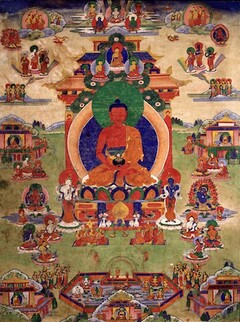Sukhāvatī Aspirations
English (21) | Deutsch (3) | Español (7) | Français (10) | Português (7) | Italiano (1) | Nederlands (1) | 中文 (1) | བོད་ཡིག (21)
A series of aspirations to be reborn in Sukhāvatī (bde ba can), the western pureland of Buddha Amitābha:
Aspiration Prayers
by
Dorje Dradul
by
Jigme Lingpa
